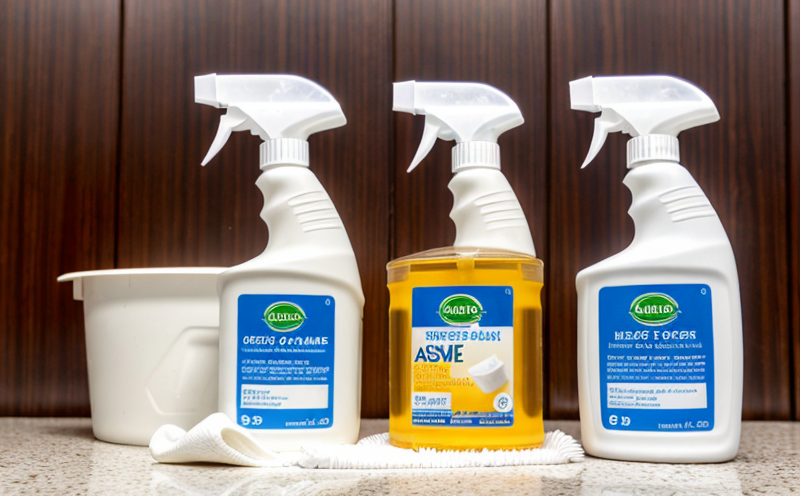ISO 20743 Antibacterial Activity Testing of Treated Hygiene Products
The ISO 20743 standard provides a comprehensive approach to evaluating the antibacterial activity of treated hygiene products. This service is critical for manufacturers and suppliers in ensuring that their products meet stringent hygiene standards, which are essential in preventing the spread of infectious diseases.
ISO 20743 defines the procedures for testing the efficacy of antimicrobial agents applied to textiles, fabrics, and other materials used in hygiene products. This includes the assessment of the antibacterial activity under various conditions that mimic real-world use scenarios. The standard ensures that treated hygiene products can effectively inhibit bacterial growth, thereby enhancing user safety.
The testing process involves several key steps. Initially, specimens are prepared according to specified ISO guidelines. These specimens represent the materials used in the production of hygiene products such as wipes, towels, and other textiles. Once prepared, the samples undergo a series of tests designed to simulate typical usage conditions.
The methodology includes both quantitative and qualitative assessments. Quantitative measures involve counting bacterial colonies on treated surfaces after exposure to standardized bacterial challenges. Qualitative evaluations focus on determining whether the treated materials effectively inhibit bacterial growth compared to untreated controls.
For this service, we utilize advanced laboratory equipment including scanning electron microscopes (SEM) and fluorescence microscopy to visualize microbial activity before and after treatment application. Additionally, our team employs microbiological culture techniques to quantify bacterial populations accurately.
Absolutely critical is the use of appropriate antimicrobial agents during specimen preparation. These agents must be chosen based on their compatibility with the target hygiene products while maintaining efficacy levels defined by ISO 20743. Our expertise lies in selecting suitable formulations that ensure consistent results across different types of materials being tested.
The rigorous nature of this testing ensures compliance with international standards and promotes consumer confidence in the safety and effectiveness of treated hygiene products. By adhering strictly to ISO guidelines, we deliver reliable data that can be used confidently by quality managers, compliance officers, research & development engineers, and procurement professionals alike.
- International Acceptance: This test procedure is widely recognized globally for its robustness and accuracy in evaluating antibacterial properties of treated hygiene products. It is accepted by regulatory bodies worldwide including the United States Food and Drug Administration (FDA), European Commission, World Health Organization (WHO), among others.
Scope and Methodology
The scope of ISO 20743 Antibacterial Activity Testing encompasses the evaluation of treated hygiene products intended to inhibit bacterial growth. This includes but is not limited to wipes, towels, gowns, and other textiles used in healthcare settings as well as consumer products.
The methodology follows a structured approach to ensure consistent results across all samples tested according to ISO 20743 requirements:
- Sample Preparation: Specimens are prepared using standard methods outlined in the ISO document. This involves cutting specified dimensions from larger rolls or sheets of fabric to obtain representative pieces for testing.
- Treatment Application: Antimicrobial agents are applied according to manufacturer specifications ensuring uniform coverage over the entire surface area of each specimen.
- Bacterial Challenge: Standardized bacterial cultures are introduced onto treated and untreated control samples following prescribed protocols.
- Incubation Period: Samples remain under controlled environmental conditions allowing sufficient time for any antimicrobial action to take place.
- Post-Test Analysis: Both visual inspection using microscopy tools like SEM, as well as quantitative analysis through microbial culture methods are employed to assess bacterial reduction levels achieved by the treated samples.
This comprehensive process allows us to provide detailed reports highlighting not only overall efficacy but also specific areas where improvements could be made based on observed discrepancies between treated and untreated controls.
Quality and Reliability Assurance
The quality of our ISO 20743 Antibacterial Activity Testing service is paramount. We employ stringent quality control measures at every stage from sample preparation to final report generation.
Our laboratory adheres strictly to all relevant international standards including ISO 15195-2 for antimicrobial textiles and EN 16886: Part 2 for medical devices. These certifications ensure that our methods meet the highest industry benchmarks.
To maintain reliability, we regularly calibrate all instrumentation used in testing against recognized calibration standards provided by NIST or similar bodies. This guarantees accurate measurement readings throughout each session.
Additionally, our team consists of highly qualified professionals with extensive experience in microbiology and chemistry. Each analyst undergoes continuous training to stay updated on latest developments within the field ensuring consistent application of best practices during testing procedures.
A key aspect of our quality assurance program is independent validation through repeat tests conducted periodically using fresh batches of samples. This helps identify any potential variations or anomalies early on, allowing timely adjustments if necessary.
Finally, all reports generated are reviewed by senior personnel to ensure accuracy and completeness before being delivered to clients. Transparency in communication ensures that stakeholders receive clear insights into test outcomes along with actionable recommendations for improvement where applicable.





